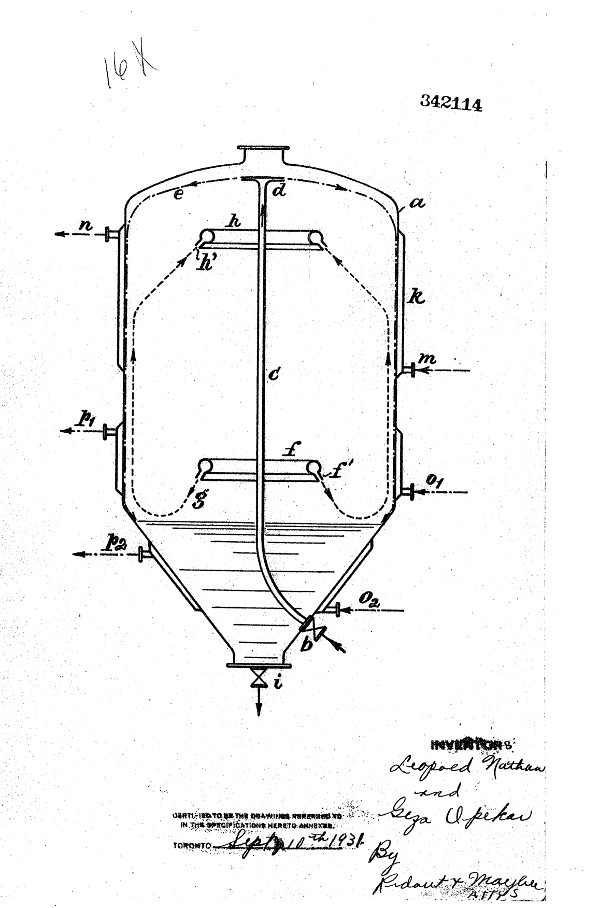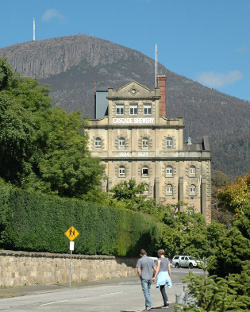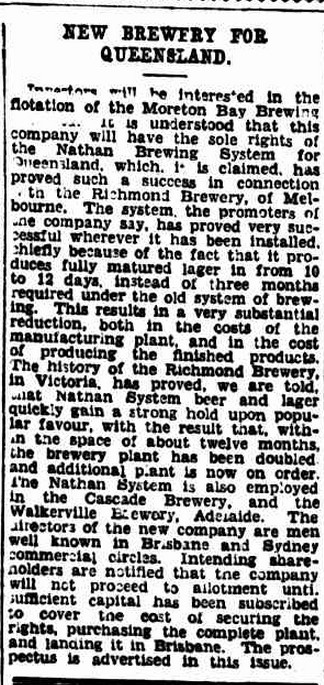
The Nathan System in Australia
When the true history of lager beer brewing in Australia is written, one name that is sure to feature prominently will be that of Leopold Nathan.
Ralph and William Foster, on the other hand, will be relegated to their proper status as minor players. The Foster brothers have been elevated to the position of lager gods in the corporate mythology of Carlton and United Breweries, but their part in the introduction of lager brewing to Australia was actually quite slight, and has been greatly exaggerated.
Many brewers in the Australian colonies attempted lager brewing in the late nineteenth and very early twentieth centuries, but the locally-produced version of this style of beer failed to catch on. The Australian Brewers’ Journal observed in 1897, for example, that the ‘experiment in lager beer’ had been ‘a complete failure in the colonies’.
The real history of lager brewing in Australia began during the First World War, when the importation of popular brands of German lager was curtailed. A strong demand for imported lager had developed in the preceding few decades, and local production became the only way to satisfy this demand when imports ceased in 1914. During the late 1910s and the 1920s, therefore, the major Australian breweries began to produce lager beer, or ramped up their production of this style if they were already making it, and it was during those years that the bottom fermentation system first became firmly established in Australia.
Leopold Nathan, a Swiss chemist, invented a revolutionary brewing system that featured the complete isolation of the wort from the atmosphere and from potential contaminants, fermentation with a pure yeast culture, and a dramatic reduction in the amount of time required to produce marketable beer. His system was first granted a patent in the United States in 1908, and it was refined and improved over the next couple of decades. Three complete Nathan breweries were installed in Australia during the 1920s, and a further three installations were planned but not implemented.
The Walkerville Co-operative Brewing Company Ltd of Adelaide signed an agreement with the Nathan Institute of Zurich in November 1925 for the installation of its plant at the company’s brewery at Thebarton, and this became the first Nathan system to be installed in Australia. It was a major project for the brewery, requiring the erection of additional buildings to accommodate the new equipment. Beer production commenced in the Nathan plant late in 1927, and a formal opening ceremony was held in January 1928.
The Nathan Institute had sent Ralph Weidlich to install and commission the plant, and he was subsequently appointed as brewer to the company, remaining there until the end of 1929.
Another Nathan system was installed at the Cascade Brewery in Hobart. The company’s chairman had ordered it when he was holidaying in Europe early in 1926. He visited Nathan plants in operation in Germany and England, and the headquarters of the Nathan Institute in Zurich, where the purchase was transacted.
Installation of the new plant was supervised from late 1926 by Cascade’s newly-appointed head brewer, John Francis Xavier de Bavay. The new brewery was formally opened in December 1927, by which time brewing had been commenced.
The first output of Cascade lager was available for tasting at the opening ceremony. As at Thebarton, space had to be made for the new equipment, and several new storeys were added to the main brewery building in Hobart, creating the now familiar tower.
The third Nathan system to be installed in Australia was not added to an existing brewery. It was part of an entirely new brewery, built from scratch in Church Street in the Melbourne suburb of Richmond. The Richmond (Nathan System) Brewing Company Pty Ltd was founded by Peter Grant Hay, a wealthy Melbourne hop merchant and race-horse breeder. The brewery came into production near the end of 1928.
The Nathan Institute had sent Heinrich Walter Haenggi to Melbourne in 1927 to supervise the erection of the machinery for the new Richmond Brewery, and he was subsequently employed by Hay, with Nathan’s permission, as brewery manager. He was dismissed in December 1929 when Hay discovered that he had been involved in the formation of a company in Western Australia to brew beer by the Nathan process, and had been involved in negotiations to establish other Nathan breweries in Sydney and elsewhere. These other breweries would potentially come into competition with the Richmond Brewery, his employer. Haenggi was recalled by the Nathan Institute in December 1930, and went to the Belgian Congo to supervise the erection there of another Nathan brewery.
The company established in Western Australia to brew by the Nathan system was called Perth Breweries (N. S.) Limited. The vendor syndicate acquired the rights for the use of the Nathan system in the state of Western Australia, acquired a site at South Perth, and commissioned plans for the buildings. Response to the prospectus, published in October 1929, was slow and slight, and early in 1930 the proposed flotation was abandoned because insufficient shares had been applied for.
In New South Wales, also late in 1929, a prospectus was published for a new company to be called Sydney Breweries Limited, which intended to operate a Nathan system brewery at Lithgow. The vendors had secured a lease over, and option to purchase the existing brewery at Lithgow, and, through Haenggi, the rights to operate the Nathan system in New South Wales. This project did not proceed—neither the formation of the company nor the installation of the Nathan equipment—but the Lithgow brewery did undergo a major overhaul at the time, and began producing a less sophisticated form of lager beer at the end of 1929.
A further company, called the Moreton Bay (N. S.) Brewing Company Ltd and registered in Brisbane in May 1930, was to operate a Nathan system brewery in Queensland. By that time, Haenggi had been dismissed from his position at the Richmond Brewery, and he was to become the manager of the new brewery in Queensland, to be erected somewhere in Brisbane. This proposal quietly evaporated, and by the end of 1930 Haenggi had left Australia. One of his last actions before doing so was unsuccessfully to sue Peter Grant Hay for wrongful dismissal.
It is not surprising, given the emerging economic conditions in Australia at the time, that the Nathan brewery proposals for Perth, Lithgow and Brisbane all failed. The country was descending into depression, the depths of which were reached in 1930 and 1931. Nevertheless, the intended territory of these proposed breweries was occupied by Nathan beer.
By 1930 the Richmond Brewery was supplying pubs in Western Australia, New South Wales and Queensland, as well as in its home state, and had quadruplicated its original plant in order to keep up with the phenomenal demand for its beer. Nathan breweries may have been installed in only three states, but the influence of Nathan beer was felt across the entire country. The Nathan system was thus a significant factor in the conversion of Australian beer drinkers from British ale to Continental lager.







